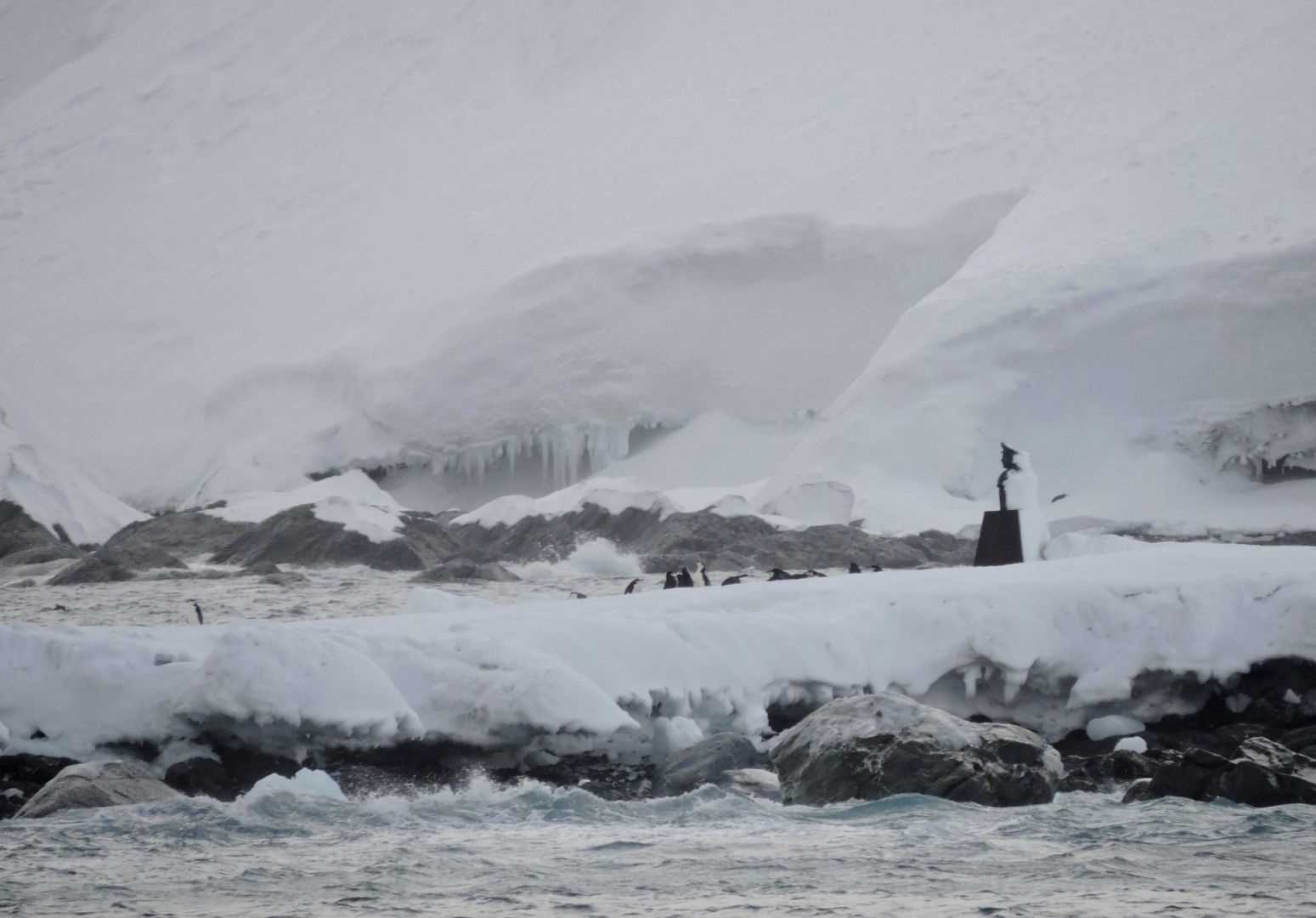National Geographic Orion approached Elephant Island shortly before breakfast and sailed along the northern coast for a couple hours until reaching Point Wild. Elephant Island is a very rugged and uninviting place, unless one has been camping on sea ice for five months! This remote island is situated far off the northeastern end of the South Shetland Islands chain. With that being said, it is appropriate to explain that this island is probably best known for the role it played in the epic tale of survival of Ernest Shackleton’s ill-fated Imperial Trans-Antarctic Expedition of 1914-16. After their ship Endurance was trapped and eventually crushed by pack ice in the Weddell Sea in October, 1915, Shackleton and his men were cast adrift on sea ice until they were able to launch their salvaged lifeboats in April 1916, and make their way to Elephant Island.
They had no hope for rescue on Elephant Island, so Shackleton and five companions set off in one of their three small vessels, a twenty-two foot boat named James Caird, and successfully sailed across eight hundred miles of treacherous ocean to seek help from the whaling stations of South Georgia. The rest of the crew of twenty two men remained behind on Elephant Island for four months on a tiny, desolate, rocky beach (now named Point Wild after Shackleton’s second-in-command, Frank Wild) waiting for rescue…that is, if Shackleton ever made it to South Georgia. Ernest Shackleton’s astonishing 1,200-km (almost 800-mile) small boat voyage through these waters from Elephant Island to South Georgia during the winter (April and May) of 1916 was very much on our minds today. It was surely one of the greatest sailing feats of the modern age and leaves many people simply shaking their heads in near disbelief and amazement. We showed a film about his voyage last night and discussed it in a lecture yesterday, which made us appreciate the warmth, dryness, and comfort all the more aboard our own wonderful vessel…especially as we looked out the windows and imagined how much bigger the waves were during the winter storms with which Shackleton had to deal. The sight of the storm-swept beach at Point Wild helped us appreciate the ingenuity and determination of the hardy men who survived this ordeal. The whole story of this expedition from a century ago simply boggles the mind.
In spite of katabatic winds, complete with impressive will’o’waws, the more hardy, or perhaps fool-hardy, among us went out on Zodiac cruises that got us closer to the shore where the Endurance crew survived under two overturned boats for four desperate months. As we cruised around the rocks, we could see a statue with the bust of Piloto Luis Pardo, the Chilean captain of the ship Yelcho that Shackleton returned with in August 1916, to finally rescue his crew on Elephant Island. We also observed hundreds or perhaps thousands of chinstrap penguins sitting and standing around on the snow-covered rocks…waiting for the snow to dissipate, so they could build up their pebble nests and start breeding.







